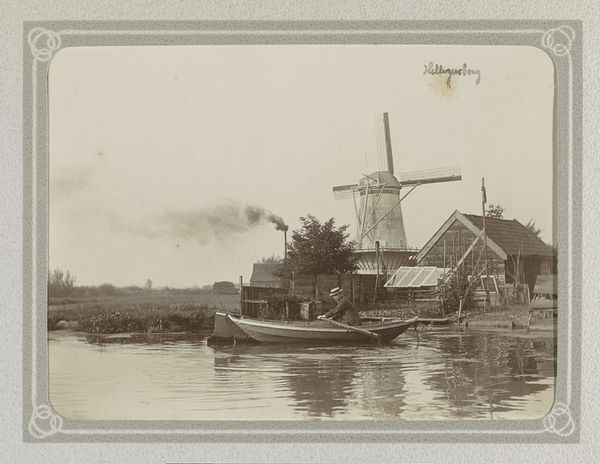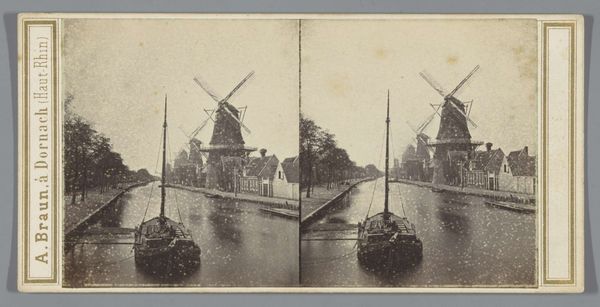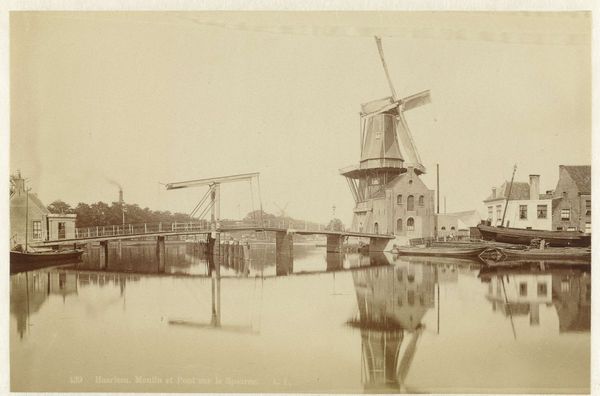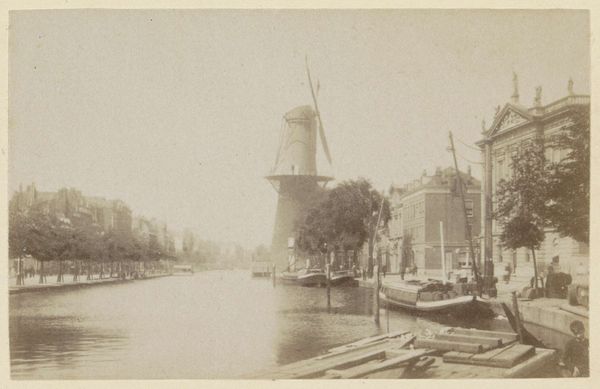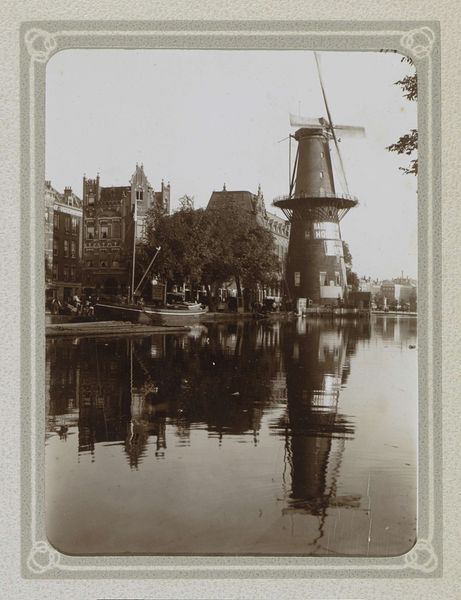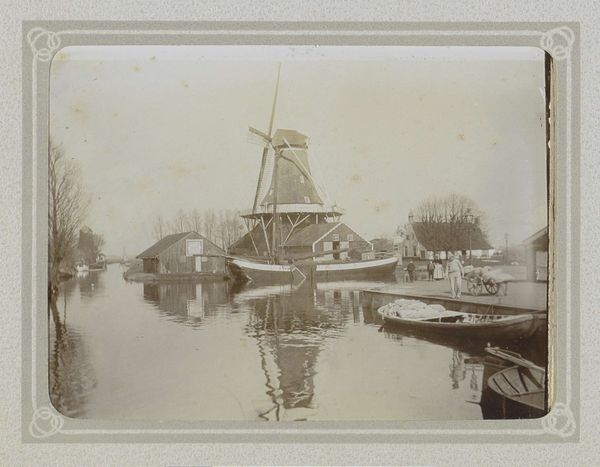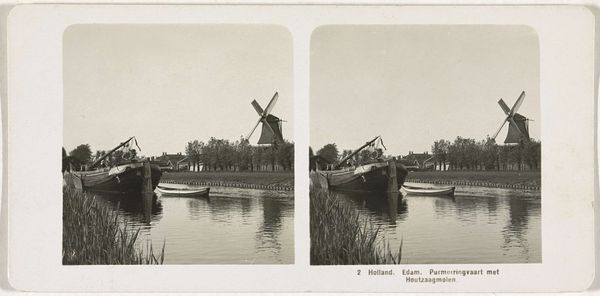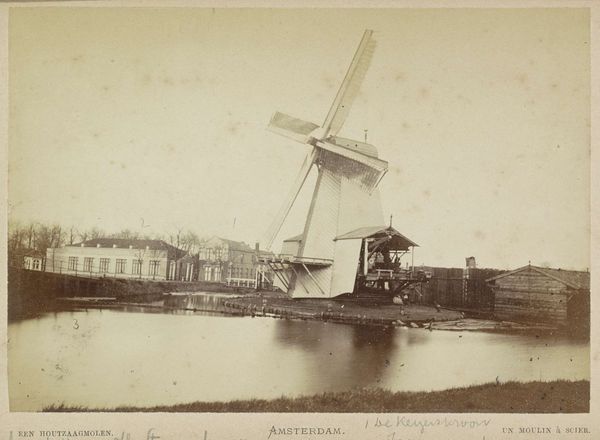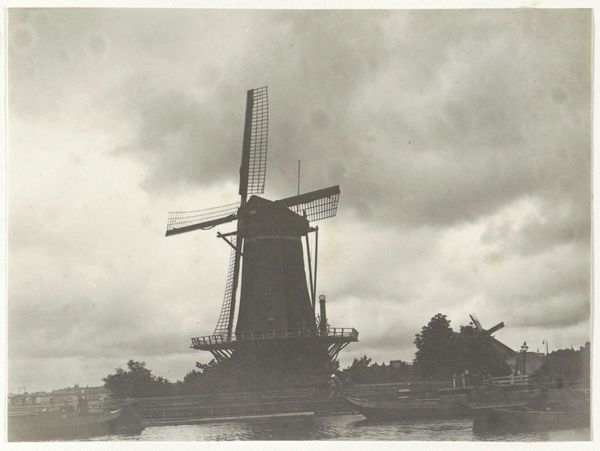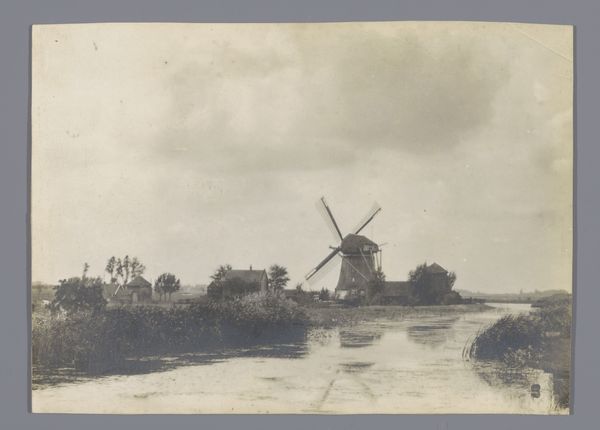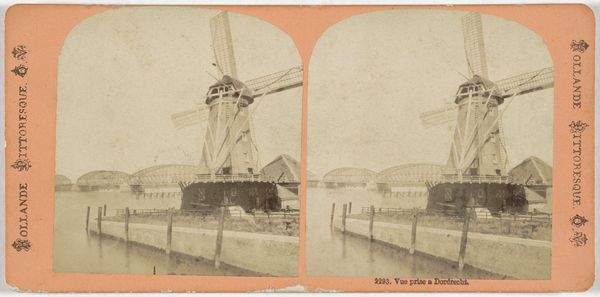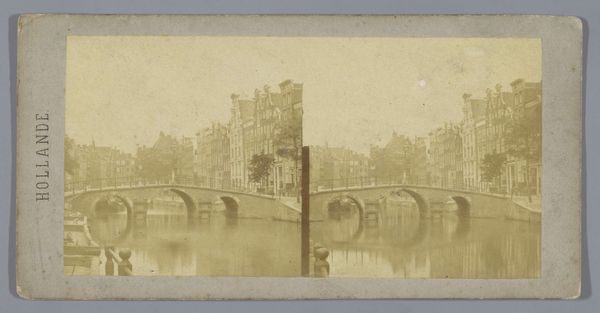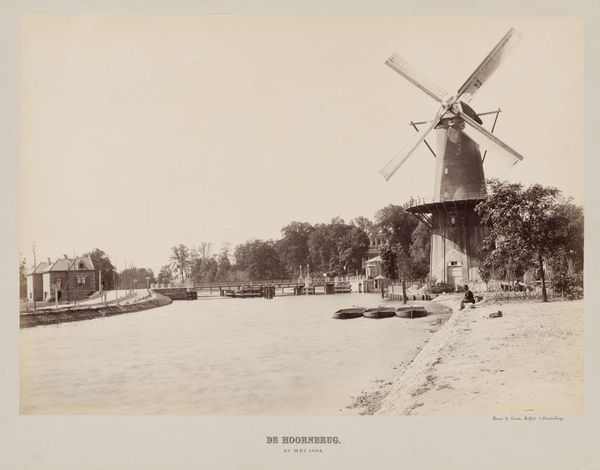
Dimensions: height 85 mm, width 170 mm
Copyright: Rijks Museum: Open Domain
Curator: What we have here is a stereoscopic print, dating from around 1860 to 1890, by the studio of Ferrier, Père, Fils et Soulier. It's entitled "View of a Windmill on the Alster near Hamburg." Editor: My first thought is "tranquil." It’s like a perfect, hazy memory. The water’s so still it’s practically a mirror, and the windmill stands like a gentle giant watching over the scene. Curator: Exactly! This piece emerges from Pictorialism, a late 19th-century movement where photographers emulated painting. They favored soft focus, atmospheric effects, and manipulated printing processes. It elevated photography to art, challenging its perceived role as mere documentation. Editor: Right, it doesn't feel like just a record. The photographer clearly aimed for more than just capturing what's in front of the lens. I mean, look at that tonality. It’s so dreamy. You can almost hear the soft splash of the water. Curator: The subject itself - the windmill on the Alster, a river in Hamburg - speaks to the burgeoning civic pride during the period. Windmills weren't just practical; they became symbols of progress, of harnessing nature, and emblems in rapidly modernizing cities. This photograph becomes part of the construction of Hamburg's identity. Editor: I love that—civic pride in the guise of everyday beauty. But I keep coming back to how much it feels staged, carefully arranged to evoke an emotion. Maybe a bit too perfectly composed. I half expect a melancholy poet to be leaning against that bridge! Curator: And that tension—between staged composition and capturing a supposedly authentic moment— is really at the heart of pictorialist photography. The goal was never truly to mimic reality, but to create something... more. Editor: I see that. It’s not about the exact rendering, it’s about capturing the essence, the feeling, the soul of a place. You leave the specifics to the mundane. Curator: A fantastic thought! Ultimately, a work like this reveals how photography evolved from technical document to artistic expression, while contributing to the visual language and identity of a rising urban center. Editor: Yeah, I came in expecting something static and historical, and now I’m thinking about city branding, dreamy effects, and lonely poets all at once. Thanks!
Comments
No comments
Be the first to comment and join the conversation on the ultimate creative platform.
